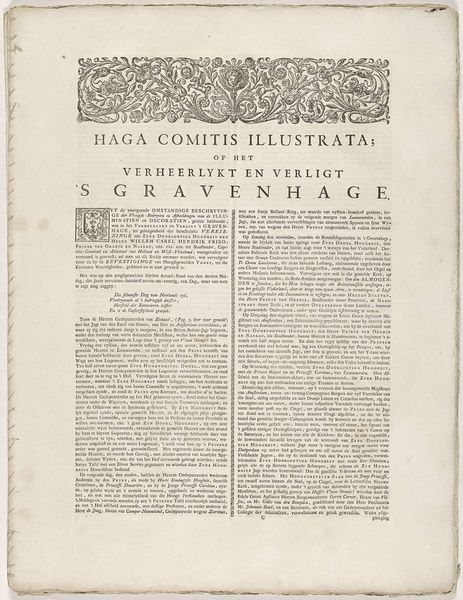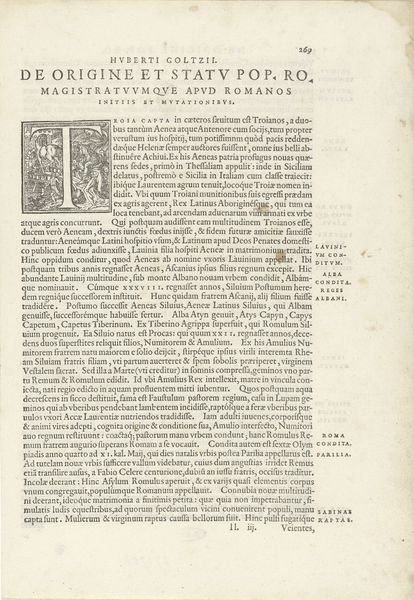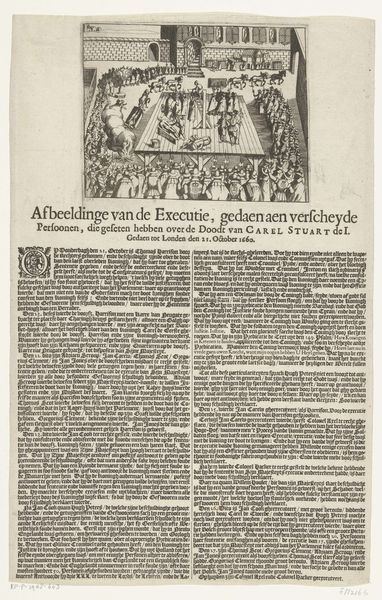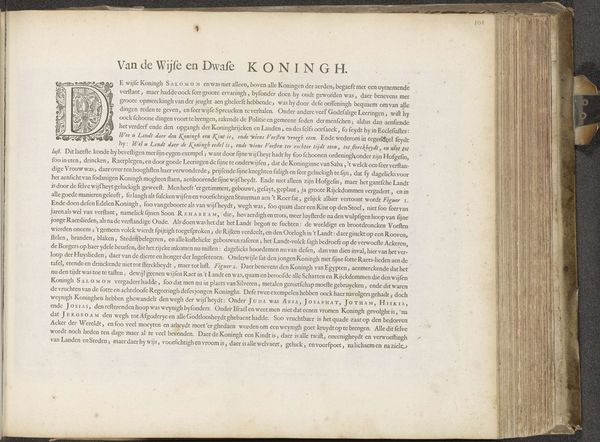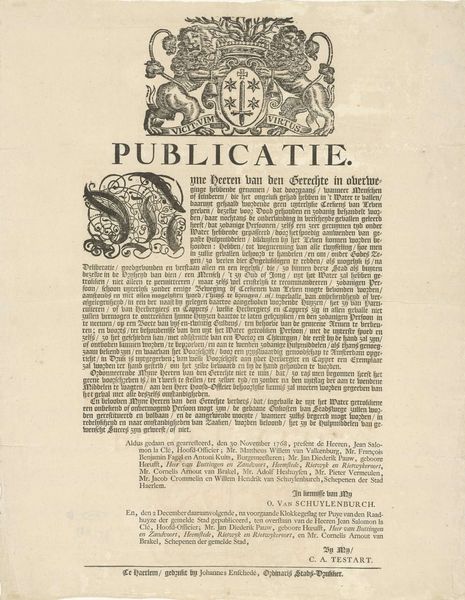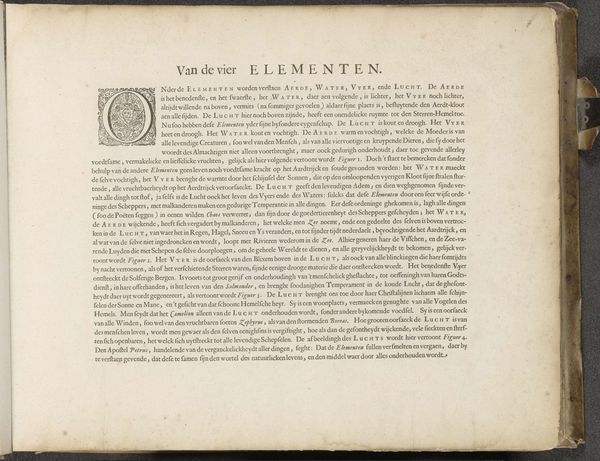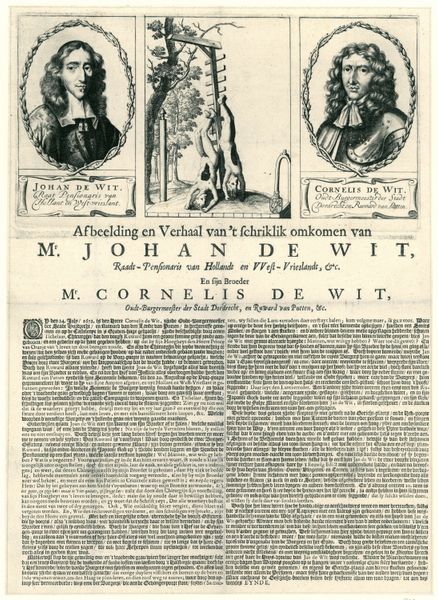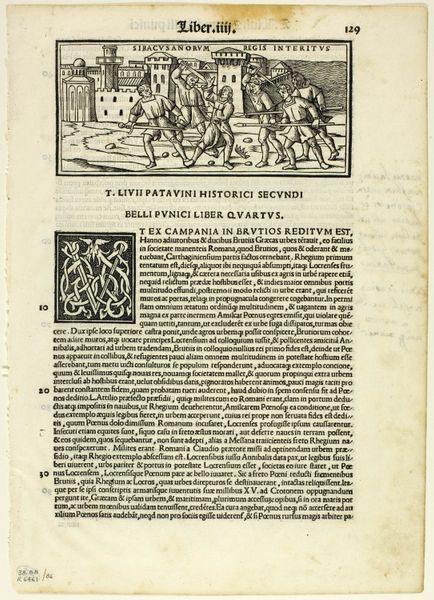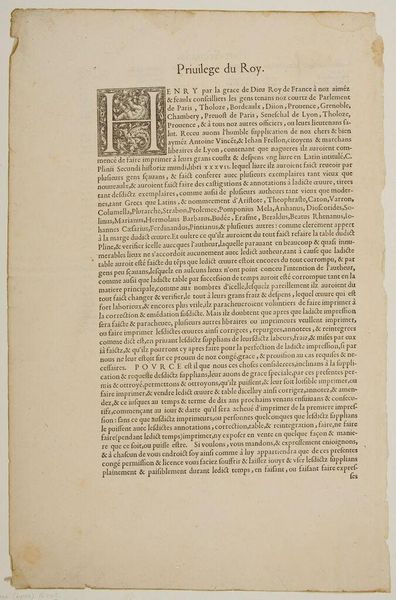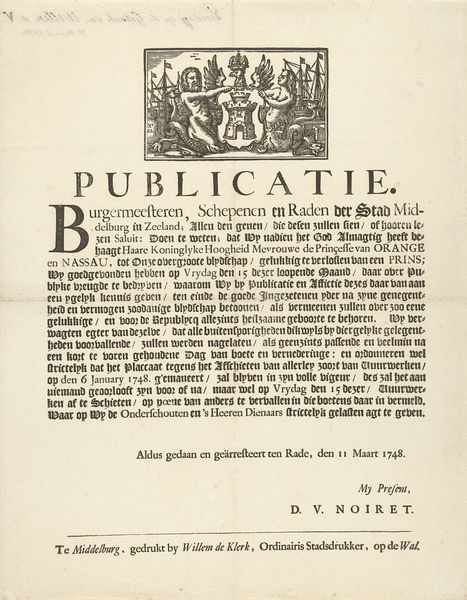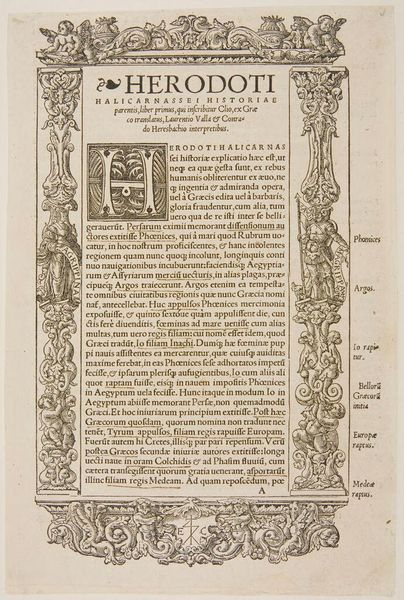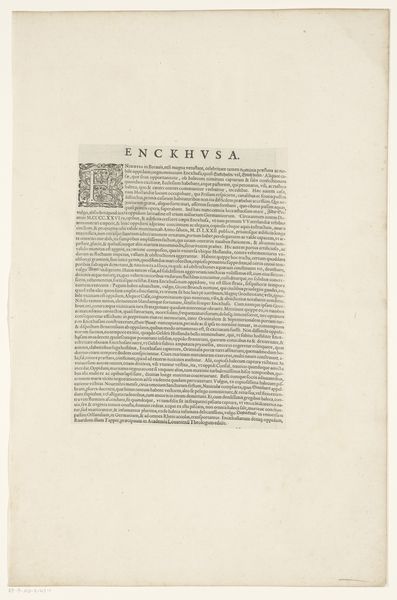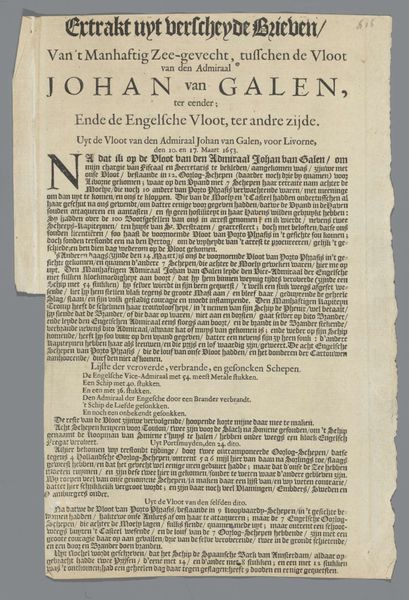
Eerste blad in: Haga comitis illustrata; of het verheerlykt en verligt 's Gravenhage, 's-Gravenhage 1751 1751
0:00
0:00
anonymous
Rijksmuseum
print, textile, paper, typography
#
baroque
#
dutch-golden-age
# print
#
textile
#
paper
#
typography
Dimensions: height 545 mm, width 420 mm
Copyright: Rijks Museum: Open Domain
Curator: Here we have a print entitled, "Eerste blad in: Haga comitis illustrata; of het verheerlykt en verligt 's Gravenhage, 's-Gravenhage 1751" created in 1751. Editor: It looks so dense! A wall of ornate typography almost overwhelms the delicate, decorative elements at the top. There's a certain formality to the layout; it really does evoke the feeling of a carefully constructed pronouncement. Curator: This print, now housed at the Rijksmuseum, serves as more than just a decorative object. Consider its function within the broader political and social landscape. The text, rendered in meticulous detail, directly speaks to the glorification and illumination of The Hague at this specific point in its history. What underlying power dynamics are at play in commissioning and distributing a work like this? Editor: Absolutely! And the choice of typography isn't arbitrary either. The varied font sizes and elaborate letterforms signal hierarchy. Look at how "HAGA COMITIS ILLUSTRATA" is emphasized. I'd be curious to decode the figures nestled amongst the swirling Baroque vegetal ornaments—are those familiar allegorical representations or symbolic references specific to the city? It almost mimics woven tapestry, carrying the visual weight of the textiles also listed in its materials. Curator: Precisely. In its baroque style, such visual rhetoric elevates 's-Gravenhage to almost mythical status. It obscures complexities, presenting instead an image crafted to solidify the existing social order. Dutch Golden Age ideals blend with burgeoning Baroque sensibilities, resulting in interesting tension within a single artwork. Editor: It highlights how power uses imagery and text hand-in-hand. And there's that fascinating use of Latin; it positions The Hague within a larger, classical narrative. So what we initially perceived as mere decoration turns out to be saturated with cultural and political symbolism, as revealed by close reading and contextual grounding. Curator: That's it exactly! This piece challenges us to peel back layers, engaging in dialogues surrounding identity, race, class, and the formation of history itself. Editor: And by carefully decoding its iconography and considering the historical period, the viewer starts to grasp the image's multifaceted relationship with its audience and how enduring certain narratives continue to be through our collective visual memory.
Comments
No comments
Be the first to comment and join the conversation on the ultimate creative platform.
